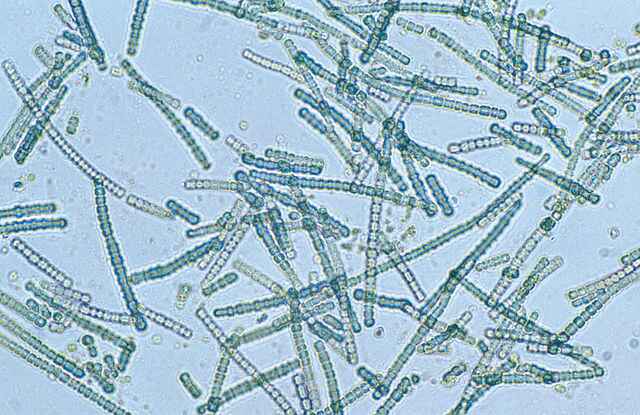Cyanobacteria, often referred to as blue-green algae, are a group of photosynthetic bacteria that play a significant role in the Earth’s ecosystems. Unveiling the mysteries of cyanobacteria involves exploring their evolution, biodiversity, and ecological importance:
1. Ancient Evolution:
- Cyanobacteria are among the oldest known organisms on Earth, with fossilized records dating back over 3 billion years. They played a crucial role in shaping the early Earth’s atmosphere by producing oxygen through photosynthesis.

2. Photosynthetic Prowess:
- Cyanobacteria are unique among bacteria in their ability to perform oxygenic photosynthesis, similar to plants and algae. This process involves converting carbon dioxide and water into organic compounds while releasing oxygen.
3. Nitrogen Fixation:
- Many cyanobacteria can fix atmospheric nitrogen, converting it into a form usable by plants and other organisms. This ability is essential for nitrogen cycling and contributes to the fertility of soils and aquatic environments.
4. Biodiversity:
- Cyanobacteria exhibit remarkable biodiversity, with species adapted to various environments, including freshwater, marine habitats, terrestrial soils, and extreme environments like hot springs and deserts.
5. Toxin Production:
- Some cyanobacteria produce toxins known as cyanotoxins. Harmful algal blooms (HABs), often dominated by cyanobacteria, can release these toxins, posing risks to the health of aquatic organisms and, in some cases, humans and animals.
6. Symbiotic Relationships:
- Cyanobacteria engage in symbiotic relationships with various organisms. For example, certain species form symbiotic associations with fungi to create lichens, contributing to the colonization of diverse habitats.
7. Biotechnological Applications:
- Cyanobacteria have potential applications in biotechnology. They are being studied for their ability to produce biofuels, capture carbon dioxide, and serve as sources of novel compounds with pharmaceutical or industrial value.
8. Extremophiles:
- Some cyanobacteria thrive in extreme environments, such as those with high salinity, acidity, or temperature. Understanding these extremophiles can provide insights into the limits of life on Earth and the potential for life on other planets.
9. Global Carbon and Oxygen Cycling:
- Cyanobacteria contribute significantly to global carbon and oxygen cycling. Through photosynthesis, they capture carbon dioxide and release oxygen, influencing the balance of greenhouse gases in the atmosphere.
10. Climate Impact:
- The role of cyanobacteria in carbon fixation and nitrogen cycling has implications for climate change. Changes in their abundance and distribution may affect the global carbon balance and nutrient availability in ecosystems.
Conclusion:
Cyanobacteria, with their ancient origins and diverse adaptations, continue to intrigue scientists and contribute to the functioning of ecosystems worldwide. While their oxygen-producing abilities shaped the Earth’s atmosphere, their biodiversity and unique characteristics make them important players in contemporary ecological processes. Studying cyanobacteria provides valuable insights into the evolution of life, the dynamics of ecosystems, and potential applications in biotechnology and environmental management.











